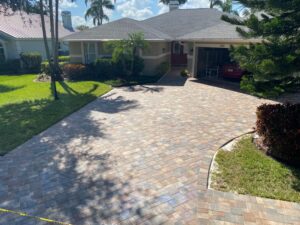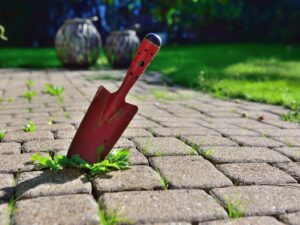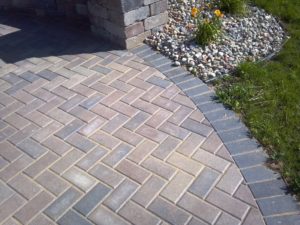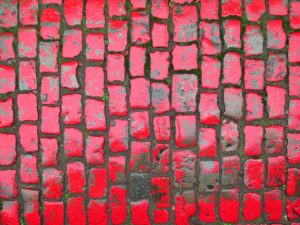The right answer is that it depends on some factors. You want to seal those pavers as soon as possible, and there is some debate about when to seal new pavers, but most specialists agree on waiting some time. This waiting can be as short as 24 or 48 hours, or as long as 90 days.
Why you should wait a little before sealing pavers?
The main reason for the waiting is the surface and ground around the pavers must be completely dry and free from any moisture before sealing. You don’t want to seal your beautiful newly installed paver when they are still wet, or even damp, because you will waste your money. Wet surfaces will cause the sealer not to adhere properly, to pool, to peel off, and could eventually cause damage to the pavers.
Another reason to wait is to give time for the pavers to settle. Also, efflorescence, or whiskers, will have time to show up and be cleaned.
You spent a lot of time and money planning and installing your new pavers, so your home could have that new curb appeal you envisioned. Now, it’s important to protect your investment and ensure the increase in value of your property by sealing those new pavers at the right time.
The protection provided for the right sealer is significant and can make a difference in the long run. Humans and nature can both damage the good looks of your pavers. As soon as the sun hits your pavers, the UV rays start deteriorating the dyes and pigments that give color to the pavers. The acid in the rain constantly pelting the surface can cause a deteriorating effect. Fallen leaves and berries left unattended can stain the pavers, and we even started with man-made stains, like food, car spillages, and work accidents. Sealing your pavers protects them against any environmental or man-made stains.
The right sealer applied at the right time will not only preserve that beautiful look they have when they are newly installed, but also will protect your investment by extending the lifespan of your pavers.
The question is: how long should you wait? That depends on a few factors.
The weather conditions
The time to wait depends on the weather or the time of the year.
How’s the weather in your area? Weather plays a big role during this process. This is something you can consider in advance, for instance, when you’re planning when to install those new pavers. It’s better to wait until the sunny days to install your pavers, or at least to have them sealed.
Lots of rain or even snow require that you wait up longer. Typically, 60 to 90 days to ensure the pavers are dry. But not all rain is terrible. The rain will help to wash away the construction debris and will help in the concrete curing process. It can also help with the efflorescence problem, see more about that below. Sunny days will help to evaporate the remaining dampness and dry completely the surface and grout.
Temperature
When planning to seal your pavers, the temperature is another factor to consider, along with the weather. Low temperatures will prevent the sealer from drying. High temperatures can dry the sealer too fast, which can make them become brittle and crack if the temperature drops at night.
Aim to seal your pavers when it is 75ºF degrees and sunny outside; however, anywhere between 50ºF and 90ºF is good for the job.
Efflorescence
Efflorescence (which means “to flower out” in French), also referred to as “whiskers”, is the whitish chalky powder that you sometimes find on the surface of a concrete or brick wall. It’s a natural and spontaneous occurrence, and it’s mainly a cosmetic issue.
Water usually contains salts, and other minerals dissolved. In the drying process, the water migrates to the surfaces of concrete and masonry walls and/or floors, or any porous material, and evaporates, leaving those salts behind, where it forms a coating. That water can permeate from the ground, a reason why sometimes efflorescence can indicate moisture intrusion that could lead to other problems, mainly when it occurs indoors.
You should wait before sealing your pavers, so you allow them to release any efflorescence that may be within the individual bricks.
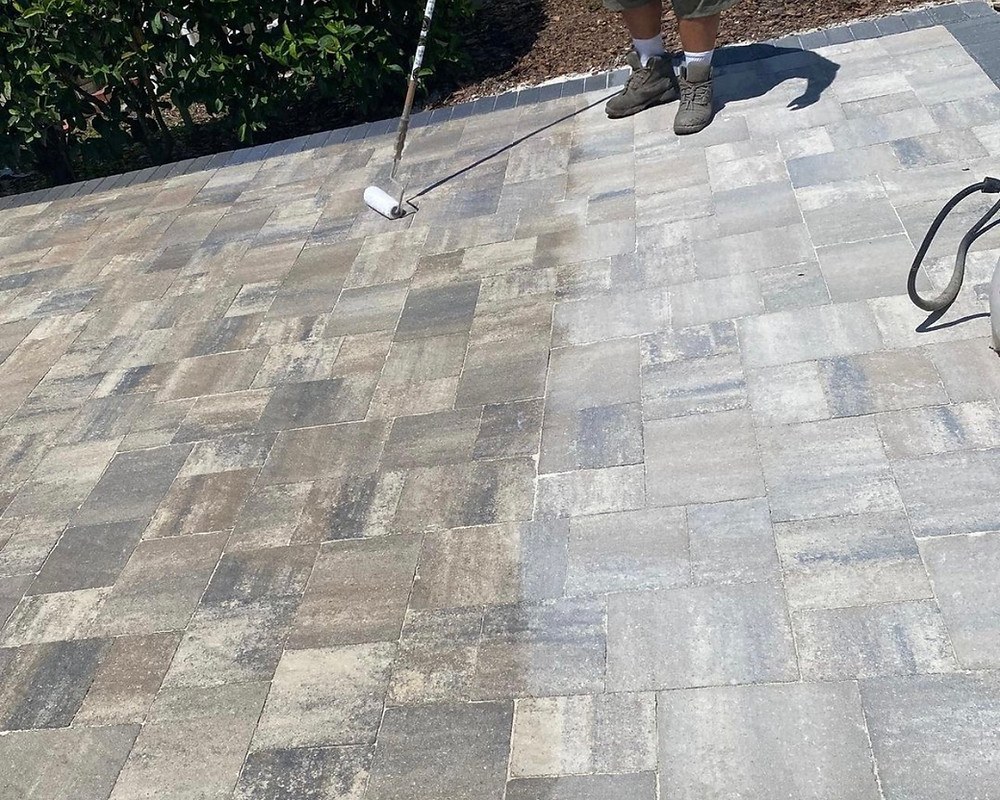
In summary
As a safe way to protect all the time and money, you invested in your pavers, sealing pavers is always recommended. It makes maintenance much easier and protects it from many forms of stains, environmental or man-made.
However, not every sealer works for every paver. And there are some poor paver sealing products on the market. Besides. Some new pavers can be sealed immediately after the surface dries the following installation, as long you use a “cure and seal” breathable paver sealer. And take note that solvent-based sealants evaporate faster, so lower temperatures are better for application. Also, areas that see a lot of traffic will need to be sealed every one to two years, while pavers in areas with little traffic can go three to five years without being resealed.
The conclusion is that for better results, it is recommended that you hire a professional, experienced, and knowledgeable contractor to do the sealing of your pavers. We will know exactly the proper time and method for sealing them.
Give us a call right now at 941-773-3098 or email us at sales@sspavers.com for a free estimate of our services.

